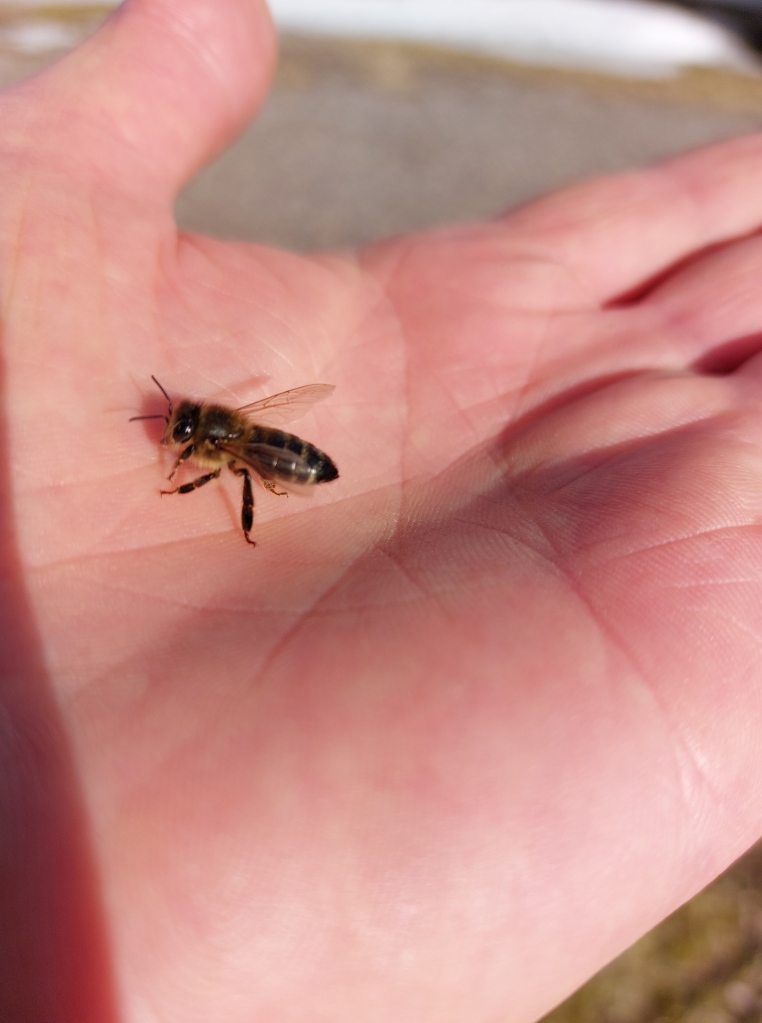Different methods to grasp a problem lead to different solutions. The same applies to honeybee disease resistance, too. Here are some thoughts about my solution, a story of one leading principle: less work.
Long before 1999, when I laid down the main scheme of my varroa resistance breeding program, I had skipped many advice of beekeeping books.
Do you think cleaning bottom boards after winter is necessary? Well, I don´t. I stopped cleaning.
Do you think washing equipment with disinfection after AFB outbreak is necessary? Well, I don´t. I skipped it.
Do you think feeding pollen patties stimulates colonies for better results? Well, I don´t. I never had extra pollen either..
Lucky incidents had guided my way too. I had come up with Buckfast bees in the early 1990s. So I didn´t look for queen cells in swarming period. Below a picture of the Finnish beekeepers visit to Austria and Hungary. Translating Horst Preissl was an honor.


Luckily, I had worked for a professional beekeeper in New Zealand 1987-1988. The main lesson: do not open all hives, look into one average hive and decide. The weak ones may need care too.
Successful beekeeping needs three things: perfection of queens, plenty of stores and good pastures. (In cold climate we need to ad moisture removing hive structure in the list of must-haves.) Anything else is vein, bees do better without you. What is left, what is my way? Putting up boxes, queen rearing, making nucs, inseminating, honey harvesting and feeding for winter.
Looking from this perspective, it was clear, that when varroa came to my hives 1996 I knew I would not use varroa treatments for the rest of my life. I wanted less work. But I realized that varroa would be a tough one: I had to lay down a plan how to get rid of varroa treatments. I had enough education and beekeeping skills to realize that hasty decisions would lead to catastrophe.
September 1999 varroa resistance breeding program was in short:
- small nucleus colonies were left without treatments right away (2001)
- normal colony treatments were slowly reduced to zero (years 2001-2008)
- controlled mating with best drone lines for all queens (isolation mating yards 1995-2014, insemination 2017- )
- honey crop is the measure of success
How could I know this would be successful? I didn´t. I was prepared to lose everything, and that was all right too, because it would lead to less work.
DID IT ALL SUCCEED LIKE PLANNED WITH ONE MAIN PRINCIPLE: LESS WORK?
Yes and no. The principle works, but what I didn´t understand was that this decision to skip varroa treatments, and more so my stubbornness to stick to it, would create me more work and worries than ever before during the hard years 2006-2016.
The next step in ”the journey of less work” is to skip insemination. But for that I need all beekeepers in Finland to join me. Modifying the words of Bob Dylan: The answer my friend is flying in the wind, the answer is flying in the wind.

It is amazing how fast bees gather pollen. All they need is 3-4 days warm days in the full willow blooming and their stores are filled until summer arrives. Below a queen less colony is united with a queen right with newspaper method.


Juhani Lundén, Instagram juhanilunden, ask to join!
Great that’s what i say about your work and your content,thanks for new post,hope it will be great working year and all the bothering news and things get away from you
TykkääLiked by 1 henkilö
I wish you could get us some more info about your experience with other well known buckfast breeders like yourself
TykkääLiked by 1 henkilö
My experience limits to Paul Jungels queens from year 1992, Swedish Buckfast origins of our stock are from the same time period. Nothing I can say about their situation now, after 30 years… If you look at the pedigree of any main European breeders, they mostly work with their own bees. It has to be this way, otherwise you are not an independent breeder. New material needs to come out of the circle of other breeders.
https://pedigree.karlkehrle.org/#
https://perso.unamur.be/~jvandyck/homage/elver/pedgr/ped_PJ_2021.html
https://perso.unamur.be/~jvandyck/homage/elver/pedgr/ped_FF_2021.html
TykkääTykkää